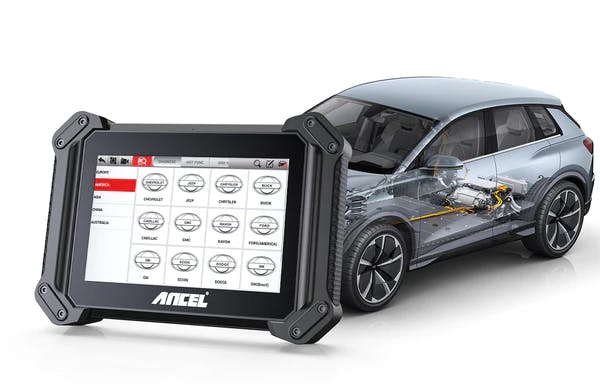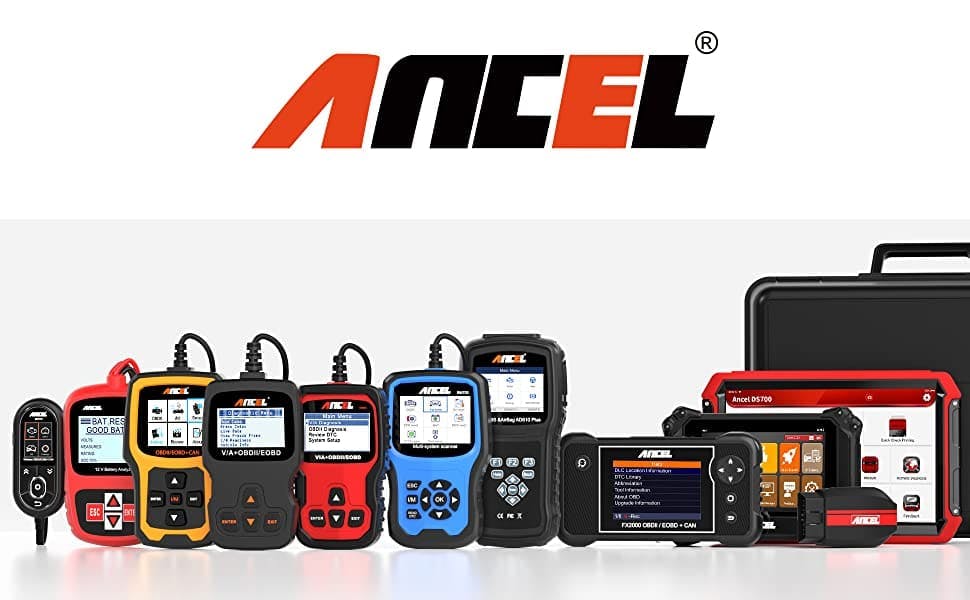How Ancel Scanners Help Interpret Diagnostic Trouble Codes
Table of contents
- What Are Diagnostic Trouble Codes?
- The Importance of Interpreting DTCs
- Understanding Ancel Scanners
- Features of Ancel Scanners
- How Ancel Scanners Simplify the Diagnostic Process
- Step-by-Step Guide to Using an Ancel Scanner
- Ancel Scanners vs. Traditional Diagnostic Methods
- Choosing the Right Ancel Scanner for Your Needs
- Choosing the Right Ancel Scanner for Your Needs
- Tips for Efficiently Using Ancel Scanners
- Benefits of Ancel Scanners
- Common Misconceptions About Ancel Scanners
- FAQs
- Conclusion
In the world of automotive diagnostics, understanding and interpreting diagnostic trouble codes (DTCs) is a critical aspect of identifying and resolving vehicle issues. Ancel scanners have emerged as valuable tools in this process, providing mechanics and car enthusiasts with the ability to access and interpret DTCs effectively. This article will explore the benefits of Ancel scanner in interpreting diagnostic trouble codes, highlighting their features, and explaining how they simplify the diagnostic process.
When a vehicle's check engine light illuminates, it indicates the presence of a problem. To diagnose the issue accurately, mechanics and car enthusiasts rely on diagnostic trouble codes (DTCs). These codes provide specific information about the problem affecting the vehicle's systems. Ancel scanners play a crucial role in extracting and interpreting these codes, enabling users to identify the underlying issues efficiently.

What Are Diagnostic Trouble Codes?
Diagnostic Trouble Codes, commonly known as DTCs, are alphanumeric codes that represent specific problems in a vehicle's systems. These codes are stored in the onboard computer system, which continuously monitors various parameters and sensors. When a problem is detected, a DTC is generated and stored, triggering the check engine light.
The Importance of Interpreting DTCs
Interpreting DTCs accurately is essential for diagnosing and resolving vehicle issues effectively. By understanding the codes, mechanics can pinpoint the root cause of the problem, saving time and effort in the diagnostic process. Ancel scanners offer the necessary capabilities to extract and interpret DTCs, providing valuable insights into the health of a vehicle's systems.
Understanding Ancel Scanners
Ancel scanners are advanced diagnostic tools designed to interface with a vehicle's onboard computer system. These scanners connect to the vehicle's OBD-II (On-Board Diagnostic) port, which is typically located under the dashboard. Once connected, the scanner communicates with the vehicle's computer, retrieving DTCs and displaying them on its screen.
Features of Ancel Scanners
Ancel scanners come with a range of features that enhance their usability and effectiveness. Some common features include:
Live Data: Ancel scanners can display real-time data from various sensors in the vehicle, providing insights into the performance of different systems.
Code Definitions: These scanners provide detailed code definitions, allowing users to understand the specific problems indicated by the DTCs.
Clearing DTCs: With the push of a button, Ancel scanners can clear DTCs from the vehicle's computer memory, resetting the check engine light after resolving the underlying issues.
Freeze Frame Data: Ancel scanners can capture freeze frame data, which is a snapshot of the vehicle's parameters at the moment a DTC is generated. This data provides additional context and aids in the diagnostic process.
How Ancel Scanners Simplify the Diagnostic Process
Ancel scanners simplify the diagnostic process in several ways:
Quick Access to DTCs: By connecting an Ancel scanner to the vehicle's OBD-II port, users can retrieve DTCs within seconds, saving time compared to traditional diagnostic methods.
Code Interpretation: Ancel scanners provide clear and concise code definitions, eliminating the need for manual code interpretation. This speeds up the diagnosis and enables users to address issues promptly.
Real-Time Data: With live data capabilities, Ancel scanners allow users to monitor the performance of different systems in real-time. This feature is especially useful during vehicle testing or when trying to identify intermittent issues.
Step-by-Step Guide to Using an Ancel Scanner
Using an Ancel heavy duty truck scanner is a straightforward process. Here's a step-by-step guide to help you get started:
Locate the OBD-II port in your vehicle. It is usually found beneath the steering column or dashboard.
Plug the Ancel scanner into the OBD-II port until it clicks into place.
Turn on the vehicle's ignition without starting the engine.
Follow the instructions provided with the Ancel scanner to establish a connection with the vehicle's computer system.
Once connected, select the option to retrieve DTCs or perform a scan.
The scanner will retrieve the DTCs and display them on the screen. Take note of the codes for further analysis.
If desired, utilize the additional features of the Ancel scanner, such as accessing live data or freeze frame data.
Based on the retrieved DTCs and additional data, diagnose the underlying problem and take appropriate measures for repair.

Ancel Scanners vs. Traditional Diagnostic Methods
Ancel scanners offer significant advantages over traditional diagnostic methods:
Speed: Ancel scanners provide quick access to DTCs, eliminating the need for manual code retrieval and interpretation.
Accuracy: The code definitions and additional data provided by Ancel scanners ensure accurate diagnoses, reducing the risk of misinterpretation.
Convenience: Ancel scanners are portable and user-friendly, making them accessible to mechanics, car enthusiasts, and even everyday drivers.
Choosing the Right Ancel Scanner for Your Needs
When selecting an Ancel scanner, consider the following factors:
Compatibility: Ensure that the scanner is compatible with your vehicle's make, model, and year.
Features: Assess the features offered by different models to determine the ones most relevant to your needs.
Budget: Set a budget and find a scanner that offers the required functionality within that range.
User Reviews: Read reviews and feedback from other users to gauge the reliability and performance of the scanner.
Choosing the Right Ancel Scanner for Your Needs
When selecting an Ancel scanner, consider the following factors:
Compatibility: Ensure that the scanner is compatible with your vehicle's make, model, and year.
Features: Assess the features offered by different models to determine the ones most relevant to your needs.
Budget: Set a budget and find a scanner that offers the required functionality within that range.
User Reviews: Read reviews and feedback from other users to gauge the reliability and performance of the scanner.
Tips for Efficiently Using Ancel Scanners
To make the most of your Ancel scanner, keep these tips in mind:
Stay Updated: Regularly update the scanner's software to ensure compatibility with the latest vehicle models and enhanced features.
Read the User Manual: Familiarize yourself with the scanner's user manual to understand its functions and settings fully.
Utilize Additional Features: Explore and utilize the additional features of your Ancel scanner, such as live data and freeze frame data, for comprehensive diagnostics.
Seek Professional Help if Needed: If you encounter complex issues or are unsure about the interpretation of DTCs, consult a professional mechanic for assistance.
Benefits of Ancel Scanners
Ancel motorcycle code reader offer numerous benefits to users:
Time Efficiency: By quickly accessing DTCs, Ancel scanners save valuable time in the diagnostic process.
Accurate Diagnoses: The clear code definitions and additional data provided by Ancel scanners ensure accurate diagnoses, leading to effective repairs.
Cost Savings: Ancel scanners allow users to identify and resolve issues promptly, preventing costly damage and unnecessary repairs.
Empowerment: With an Ancel scanner, users gain a deeper understanding of their vehicle's health, enabling them to make informed decisions about maintenance and repairs.
Common Misconceptions About Ancel Scanners
Let's address some common misconceptions about Ancel scanners:
Misconception 1: Ancel scanners are only for professional mechanics.
Reality: Ancel scanners are designed for both professionals and car enthusiasts, offering user-friendly interfaces and intuitive functionality.
Misconception 2: Ancel scanners are expensive and not worth the investment.
Reality: While Ancel scanners vary in price, they provide a cost-effective solution compared to repeated visits to the mechanic for simple diagnostics.
Misconception 3: Ancel scanners are complicated to use.
Reality: Ancel scanners are designed with ease of use in mind, with clear instructions and intuitive interfaces that make them accessible to users of all levels of expertise.

FAQs
Q1: Can I use an Ancel scanner on multiple vehicles?
Yes, Ancel scanners are designed to be compatible with a wide range of vehicle makes and models. As long as the scanner supports the OBD-II protocol, you can use it on multiple vehicles.
Q2: Do Ancel scanners provide software updates?
Yes, Ancel scanners often offer software updates to enhance compatibility with the latest vehicle models and provide new features. It's recommended to regularly check for updates and install them to ensure optimal performance.
Q3: Can an Ancel scanner diagnose all types of vehicle systems?
Ancel scanners can diagnose a wide range of vehicle systems, including the engine, transmission, ABS, airbags, and more. However, the specific capabilities may vary depending on the model of the scanner. It's important to choose a scanner that supports the systems you need to diagnose.
Conclusion
Ancel bmw scan tool have revolutionized the way diagnostic trouble codes are interpreted. These powerful tools simplify the diagnostic process, providing users with quick access to DTCs and accurate code interpretations. By investing in an Ancel scanner, mechanics, car enthusiasts, and everyday drivers can gain valuable insights into their vehicles' health and make informed decisions about repairs and maintenance.